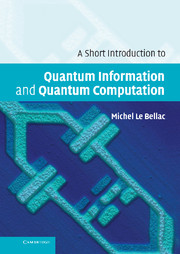Foreword
Published online by Cambridge University Press: 05 September 2012
Summary
Quantum physics is well known for being counter-intuitive, or even bizarre. Quantum correlations have no equivalence in classical physics. This was all well known for years. But several discoveries in the 1990's changed the world. First, in 1991 Artur Ekert, from Oxford University, discovered that quantum correlations could be used to distribute cryptographic keys. Suddenly physicists realized that quantum correlations and its associated bizarre non-locality, could be exploited to achieve a useful task that would be impossible without quantum physics. What a revolution! And this was not the end. Three years later, Peter Shor, from the AT&T Laboratories, discovered an algorithm that breaks the most used public key crypto-systems. Shor's algorithm requires a quantum computer, yet another bizarre quantum device, a kind of computer that heavily exploits the quantum superposition principle. The following year, in 1995, a collaboration between six physicists and computer scientists from three continents led to the discovery of quantum teleportation, a process with a science-fiction flavour.
These discoveries and others led to the emergence of a new science, marrying quantum physics and theoretical computer science, called quantum information science. Today, a steadily growing community of physicists, mathematicians and computer scientists develop the tools of this new science. This leads to new experiments and new insights into physics and information theory. It is a fascinating time.
Quantum information is still a very young science. In particular, the technology required to build a quantum computer is still unknown. Only quantum key distribution has reached a certain level of maturity, with a few start-ups already offering complete systems. Nevertheless, quantum information has been widely recognised as a source for truly innovative ideas and disruptive technologies.
- Type
- Chapter
- Information
- A Short Introduction to Quantum Information and Quantum Computation , pp. vii - viiiPublisher: Cambridge University PressPrint publication year: 2006



